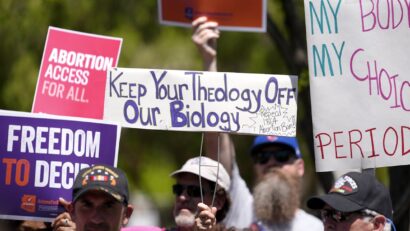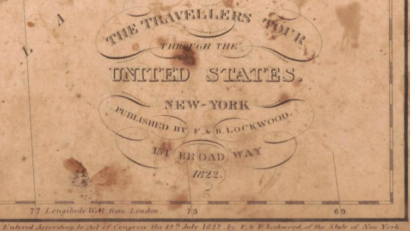
The health-care crisis won’t be solved without addressing the elephant in the room: Staff workload
Excess workload has been identified as a root cause of the current health-care crisis in report, after report, after report. Excess workload for front-line staff like nurses contributes to fatigue, burnout, medical error and staff quitting.
After heroically working under decades of austerity policies, nurses are burned out and the health-care system is in collapse. If automakers took the same approach to workload management, not a single car would roll off the line with all five wheels properly connected (did you forget the steering wheel?). Excess workload lies at the root of the health-care crisis in Canada today and the wheels are flying off the cart.
So why then does our health-care system have no systematic approach to measuring workload? There is no objective measure of workload in use that can ensure staff have no more than eight hours of care work to complete in an eight-hour shift. There is a saying: “If you can’t measure it you can’t manage it” and by this standard, the Canadian health-care system is flying blind with regards to staff workloads.
It is no wonder our health-care system is in trouble: How can we set “safe staffing levels” with no measure of workload? Without evidence-based workload management, efforts to stave off the shortfall of nurses with increased hiring and “resiliency” training and other staff retention efforts are doomed to fail.
14 hours of work in a 12-hour shift
All too often nurses are working overtime or skipping breaks in an effort to deliver the quality of care they were trained for.
(Shutterstock)
While the variability in care work can make measuring workload a challenge, new tools using computer simulation technologies are opening the door to objective workload measurement. Our computer modelling approaches have shown that nurses can have over 14 hours of work to complete in a 12-hour shift.
How are staff supposed to keep up with these demands? By rushing? By skipping non-essential tasks? All too often nurses are working overtime or skipping breaks in an effort to deliver the quality of care they were trained for. No wonder nurses are quitting in droves.
Read more:
Canada’s health-care crisis is gendered: How the burden of care falls to women
These modelling tools allow us to create virtual care units based on actual unit conditions. These models have shown the impact on nurse workload goes well beyond nurse-patient ratios as is currently being discussed.
Making sure workload is balanced to the length of a nurse’s shift requires considering a number of factors, including:
the needs of the patient, including acuity and dependency levels,
the layout of the unit and positioning of medicines and materials,
the location of the beds assigned, and
the policies and practices that determine the time needed for between-shift hand-offs, safety huddles and data entry.
All of these factors can increase workload and contribute to missed care as tasks are left undone by the end of a nurse’s working shift.
If you consider the donning and doffing of personal protective equipment required for caring for those with COVID-19, for example, a nurse might spend half of their shift simply dealing with the PPE. Where is the time to deal with the extra needs of these patients?
Excess workloads compromise care quality, and workload for nurses can vary from day to day. It can also vary considerably between units and hospitals. There is no one-size-fits-all ideal nurse-patient ratio, but workload measures can help ensure the right number of staff are allocated for the needs of the patients each day.
Evidence-based workload management
Resiliency training and other popular staff retention approaches will not solve the problem of desperately overworked staff.
(Shutterstock)
The health-care system needs evidence-based workload management to stop desperately overworked health-care staff from quitting.
Similarly, privatizing health care will not help. The entire purpose of for-profit health care is to extract money from the system for investors. That’s its raison d’être. The way most private health-care systems achieve profit growth is by cutting corners and pressing staff to work faster. Do you really want your loved one’s nurse or caregiver rushing through their required care?
The “temp” agency nursing debacle illustrates the privatization problem. Nurses are hired away from hospitals, given better working conditions and then rented back to the same hospitals at exorbitant rates for shareholders’ profit. This scam cost Newfoundland and Labrador alone over $35 million in under six months in 2023.
The United States, the poster child of for-profit health care, has by far the highest health-care costs globally with per capita costs over double those in Canada. At the same time, the U.S. has some of the worst health-care outcomes in the world with the lowest life expectancy and highest mortality rate from treatable diseases among comparable countries. The U.S. system is a warning beacon of the disaster that is private health care. In for-profit health care, everyone suffers — except the investors.
None of these privatization efforts will solve the need to manage workloads for nurses and ensure staffing capacity meets patient needs. Until health-care decision-makers employ objective tools, the drive for cost reduction will continue to drive nurses into overload at work, and both staff and patients will suffer.
Better work means better care
New measurement tools enable precisely quantifying and understanding the real drivers of nurse workload. It’s time to move beyond “magical thinking” in health care to use modern workload management tools in health-care system design and management.
Better work for nurses and other health-care professionals means better and safer care for patients. This is the inspiration behind the Better Work Better Care coalition, an open network of researchers and practitioners for the exchange of knowledge on how to improve the health-care system in healthy ways.
One of the key strategic lessons of the Better Work Better Care approach is the importance of including “improved working conditions” as a measurable indicator in all process improvement efforts. This is critical, as attempts to improve the system that ignore workload are doomed to failure as staff fatigue and work overload will compromise care quality and, eventually, also increase costs related to both patient treatment and staff retention losses.
If Canadian health-care leaders and policymakers want to stop the bleeding of staff losses and shortages, then they need to address the elephant in the room: health-care staff workloads. There are tools to measure and manage workload in health care; they need to be put to use. Läs mer…








